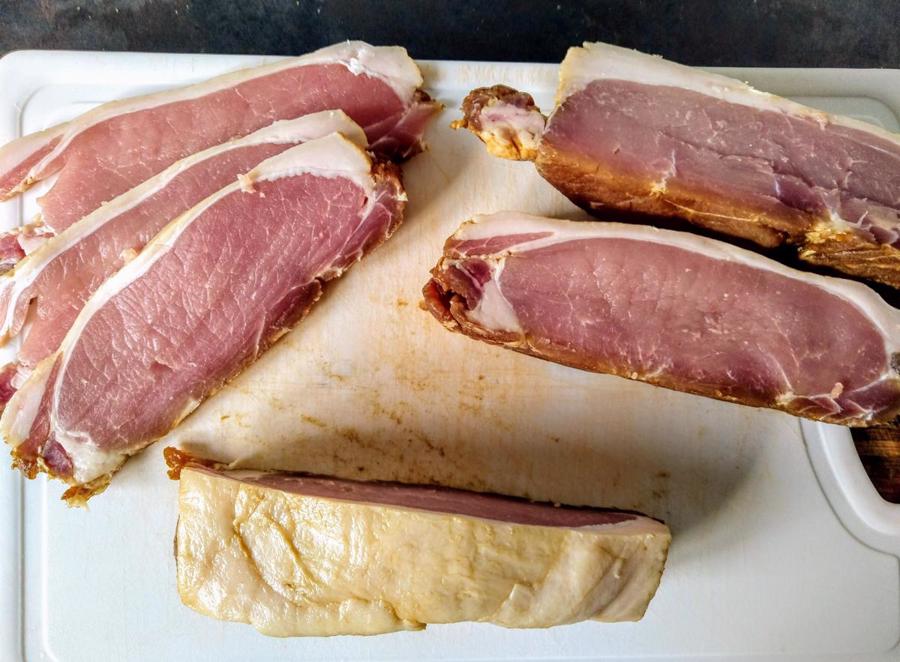Curing pork transforms an ordinary cut of meat into something extraordinary. When done properly the end result is a delicious homemade ham that puts store-bought to shame. While the old-fashioned process takes patience, modern shortcuts make curing a pork loin surprisingly easy.
Whether you prefer a classic wet brine cure or convenient dry cure, it just takes a few simple steps and ingredients to impart deep flavor and rosy color. We’ll walk through everything you need to know to cure pork loin at home. Get ready for juicy, tender, salty-sweet ham that’s a true culinary masterpiece.
Why Cure Pork Loin?
Curing brings out the best in lean, mild pork loin
-
Deepens flavor significantly through salt, spices and smoke
-
Produces appealing pink color from nitrites/nitrates
-
Tenderizes through slow protein breakdown
-
Preserves and extends shelf life
-
Allows for delicious hot or cold preparations
-
Adds signature flavor associated with ham
-
Provides satisfaction of homemade food done well
While regular pork loin is bland, curing transforms it into a far superior product. The devotion pays off in the end.
Choose a Cure Method
There are two main ways to cure pork loin:
Wet Brine Cure
- Pork is submerged in a seasoned liquid brine
- Brine penetrates meat over 5-7 days
- Simple ingredients: water, salt, sugar, spices
- Requires fridge space for container
- Produces a moist, evenly cured product
Dry Cure
- Dry mixture applied directly to meat
- Longer 1-2 week curing time
- Often just salt, sugar, and curing salts
- Meat must be rotated and rinsed
- Surface dries out more; flavor concentrates
Both produce delicious results through osmosis drawing moisture out while flavor seeps inward. Pick your method based on time, space, and preference.
Ingredients Needed for Curing
A basic cure requires just a few ingredients:
-
Salt – Essential for preservation and flavor. Use non-iodized salt.
-
Sugar – Balances salty flavor. Granulated white sugar works well.
-
Curing salt – Necessary for color and safety. Use very sparingly.
-
Spices – Customize with garlic, pepper, herbs and warm spices.
-
Water or juice (for wet cure) – Covers meat to diffuse cure.
Follow precise measurements and any recipe closely, especially for curing salt amounts.
Step-by-Step Curing Instructions
Here is the basic process for both methods:
1. Prepare the Meat
Choose a 2-3 lb boneless pork loin roast. Remove skin and trim excess fat. Weigh precisely since cure quantities depend on this.
2. Combine Cure Ingredients
For a wet brine, dissolve salt, sugar and spices in water or juice. For a dry cure, mix ingredients well. Use recipes as a guide.
3. Apply the Cure
For wet, submerge meat in brine. For dry, coat meat completely, pressing cure into crevices. Refrigerate.
4. Cure the Meat
Cure times depend on size, but 1-2 weeks is standard. Larger roasts may take longer. Flip/rotate meat in cure daily.
5. Rinse and Rest
After curing, rinse meat, pat dry and let rest overnight in the fridge before smoking or cooking.
6. Cook and Slice
Hot smoke, roast or simmer cured loin to an internal temp of 145°F. Chill, then slice for sandwiches or charcuterie boards.
And that’s it – your own artisanal cured pork loin ready to enjoy!
Additional Tips for Success
Follow these tips for best results:
-
Work cleanly and chill all equipment before starting.
-
Weigh precisely and follow a trusted recipe.
-
Mix cure ingredients thoroughly so flavor distributes evenly.
-
Rotate meat daily for uniform curing on all sides.
-
Use an accurate food thermometer to check doneness.
-
Let cured meat rest before cooking or eating for better moisture.
-
Store cured pork loin wrapped tightly in fridge for 1-2 weeks maximum.
-
Discard brine after use. Never reuse due to bacterial concerns.
With careful attention to details, your first attempt at curing pork loin will impress!
Serving Your Home Cured Ham
Part of curing’s appeal is enjoying the pork in creative ways:
-
Sliced thin for charcuterie boards or sandwiches
-
Diced in salads, omelets, pasta or pizza
-
Simmered in bean soups such as Senate or lentil
-
Roasted with glazes like honey-mustard or apricot
-
Grilled and added to tacos, nachos or empanadas
Let the salty, savory flavor of home cured ham elevate all kinds of dishes!
The Rewards of Curing Pork at Home
While curing does require time and care, the exceptional flavor payoff is worth the effort. With modern shortcuts like dry curing, the process is easier than ever. Get a pork loin ready to cure so you can taste the homemade ham difference. In a world of mass production, create something uniquely your own.

How to Make Pork Loin “Capicola”
FAQ
What is the best way to cure pork?
How to cure and smoke a pork loin?
What is the curing process of pork?
What is cured pork loin called?
How do you cure a pork loin?
I use a dry cure for my bacon pork loin and the cure itself is very simple. Wet curing involves dissolving the salt and sugar in water and then submerging the loin in the brine. In many cures, pink salt is used and this is called prague powder / instacure or more specifically sodium nitrite. This bacon recipe involves no nitrites so why is that?
How to make curing mix for pork loin?
To make the curing mix for your pork loin, start by weighing your meat in grams. Once you have the weight, calculate how much of each ingredient you will need. For the salt, you want to use 3% of the weight of the meat, plus an additional 0.25% of curing salt No. 2.
Can You Make your own cured pork loin?
With a little patience and attention to detail, you can create your own delicious cured pork loin at home! Hanging and drying the pork loin is the most critical step in the curing process. After the pork loin has been cured, it’s time to hang it to dry. If using charcuterie wraps, wrap the meat on all sides before trussing it to hang.
How long should a pork loin be cured?
Finally, hang the pork loin to cure at around 50-60°F for several weeks or until it has lost at least 35% of its initial weight after curing (recorded at step 7). Once cured and dried, remove any charcuterie wrap (if used) and slice very thin to serve. Store tightly wrapped in the refrigerator or freezer until needed.
